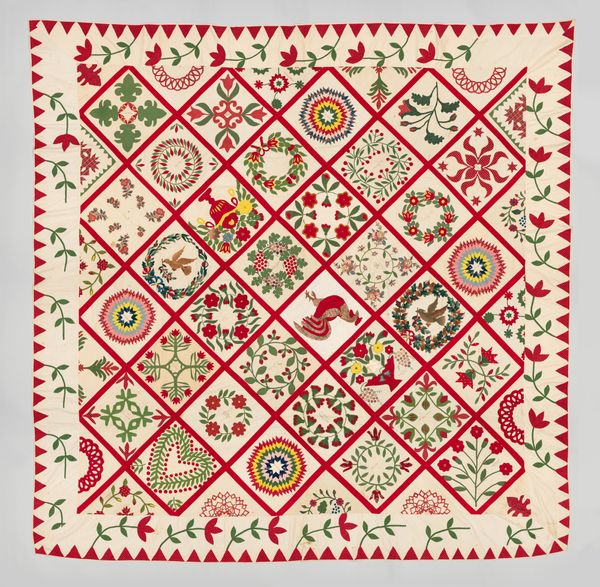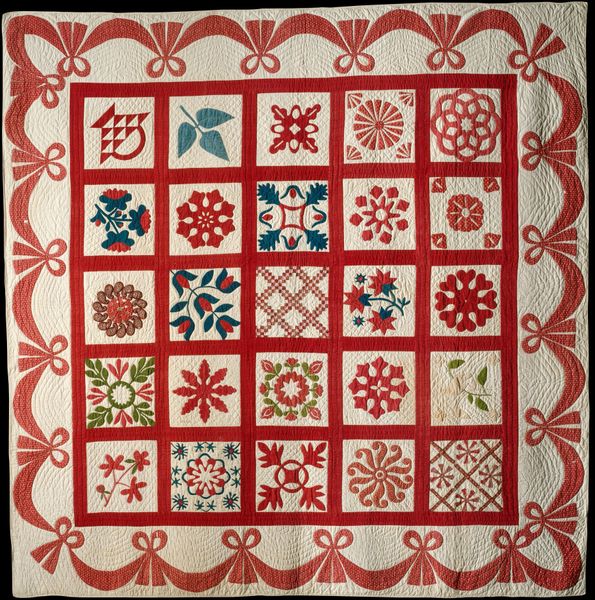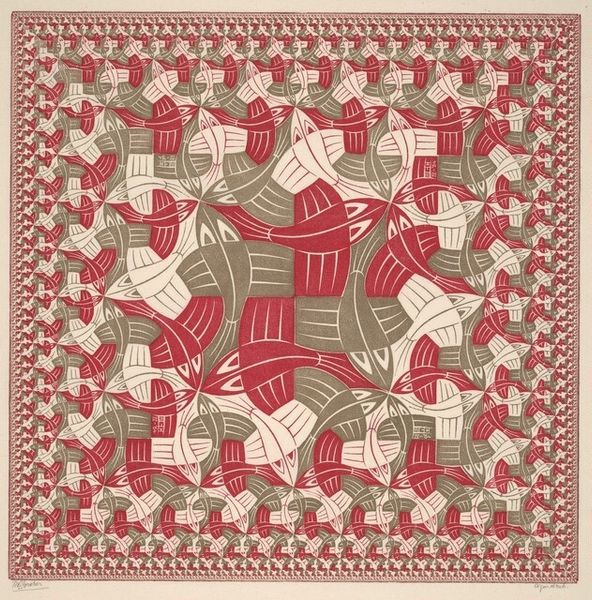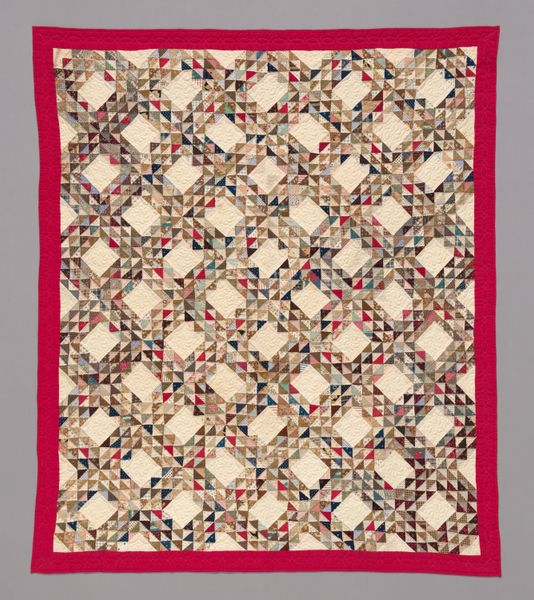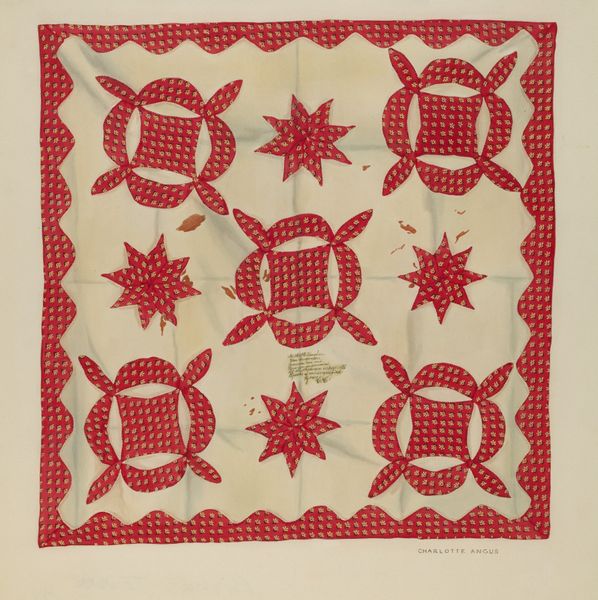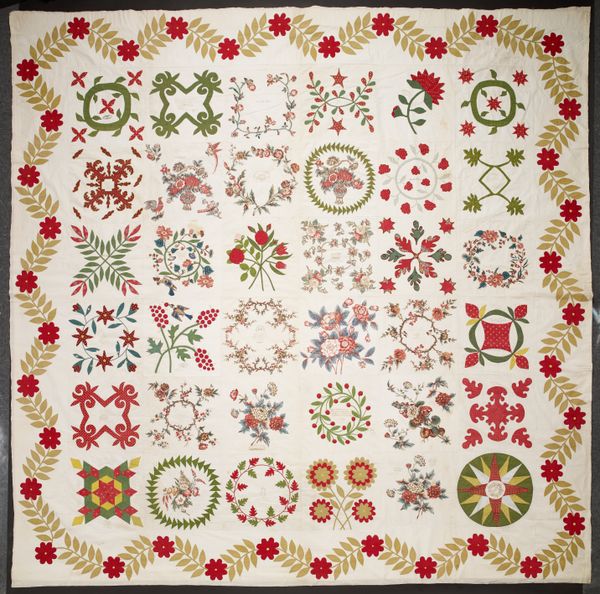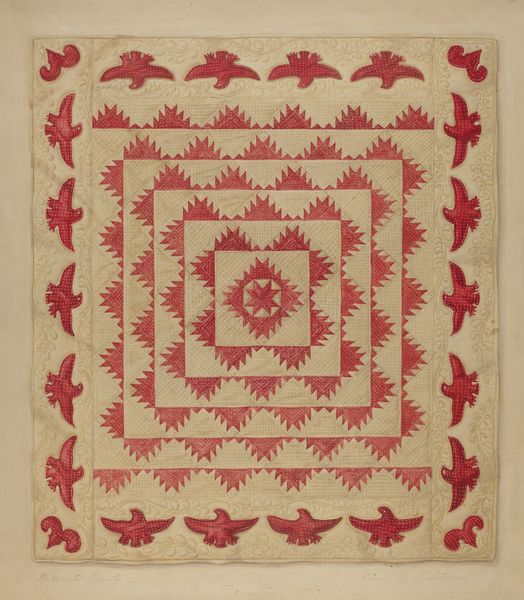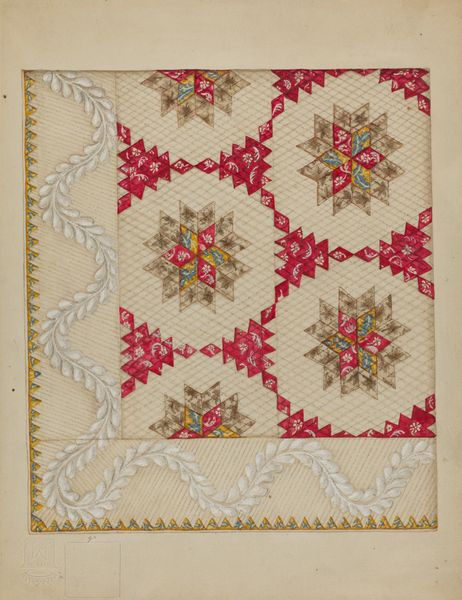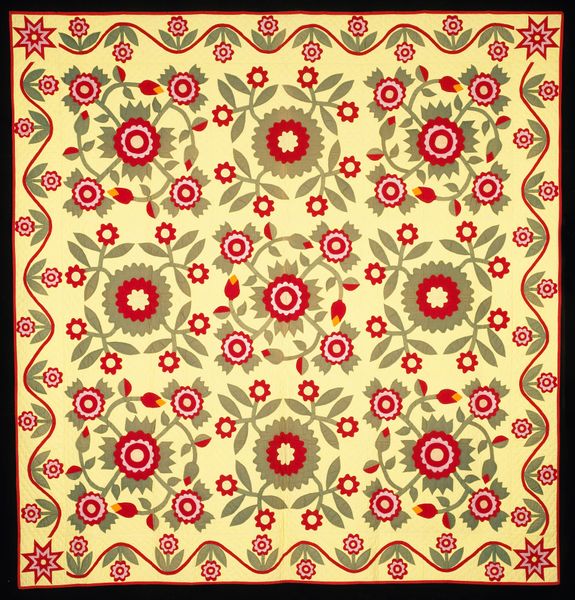
textile, cotton
#
folk-art
#
textile
#
geometric pattern
#
folk-art
#
organic pattern
#
cotton
Dimensions: 90 1/8 x 86 1/2 in. (228.92 x 219.71 cm)
Copyright: Public Domain
Editor: Here we have a "Floral Appliqué Quilt" from the 1860s or 1870s, made of cotton. The geometric pattern combined with those flower arrangements make it feel like such a deliberate folk piece. What aspects of its materiality strike you? Curator: The sheer labor involved in creating this quilt, the cutting, piecing, and stitching of each individual floral motif, that's where I begin. What social context produced the need and capacity for such craft? How did it function within that domestic space? Editor: It’s interesting you say that, because when I look at it, I consider how its design sort of blurs the boundary between art and utilitarian object. The repeated geometric patterns certainly show the amount of work that went into it. Was it a widely consumed piece? Curator: Exactly! We often separate "high art" from the "decorative arts", or from functional items like quilts. But this quilt challenges those hierarchies. Thinking materially, we need to consider what was the function of this quilt, the use of cotton. How would the makers’s socioeconomic status affect the quilt quality? These material conditions tell a more compelling story. Editor: I guess you’re right; when we separate a quilt like this from its maker, from the conditions and material involved, we’re only getting a piece of the story. Is there anything else about the material context that you notice? Curator: Consider where the materials sourced? The type of cotton fabric suggests the entanglement of this object with global trade routes, or potentially with local agricultural practices. I wonder if there are remnants or flaws in the weave? Were they incorporated to be more economic and functional? These decisions give us glimpses into the lives of those who created and used it. Editor: This has totally reshaped how I see the piece. Thanks, that’s really helpful to contextualize that. Curator: Agreed! It’s crucial to appreciate the quilt’s production rather than just appreciating the aesthetic design, and to examine its role within society.
Comments
minneapolisinstituteofart almost 2 years ago
⋮
Many quilts from the 1700s and early 1800s featured a large central motif, called a medallion. But in the mid-1800s, block-style quilts surged in popularity. This one has nine blocks, each punctuated with a spray of green and red tulips. One advantage of such quilts was that the squares—usually one or two feet wide—were easy to carry along on social visits, allowing women to stitch as they chatted. This meant “free time” was always productive. The quilter could never be accused of ignoring her household duties, even when she was away from home. A single block with an elaborate appliquéd design and careful quilting stitches could take as long as forty hours to complete. Even an enthusiastic quilter managing a household in the mid-1800s might make only one quilt like this a year.
Join the conversation
Join millions of artists and users on Artera today and experience the ultimate creative platform.
